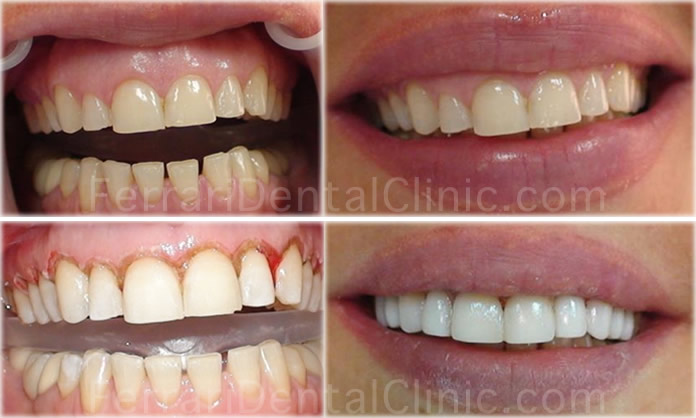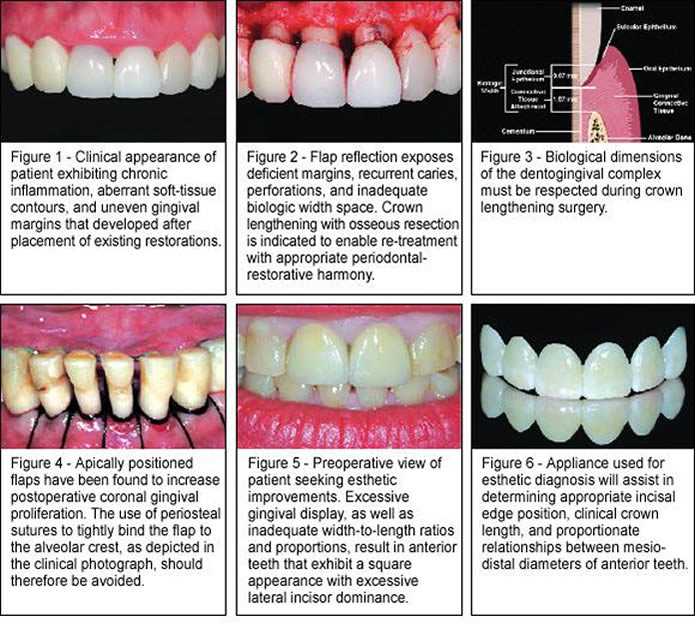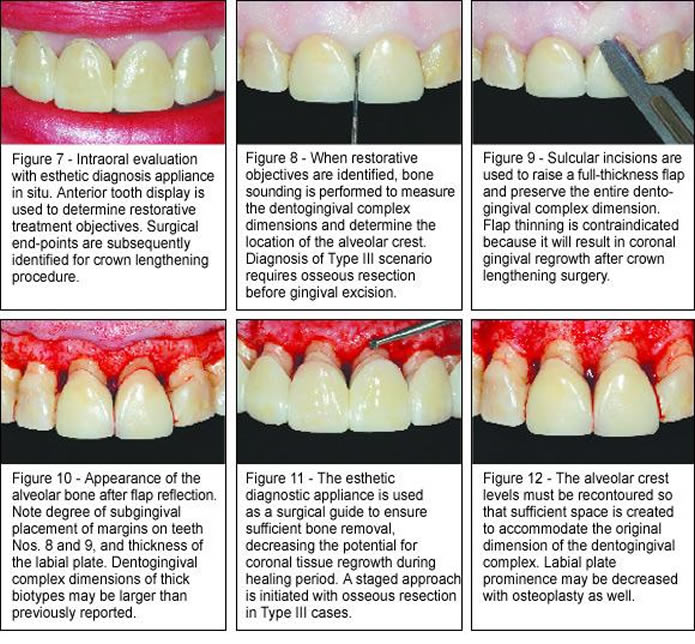Aesthetic Surgery
The world's best looking crowns or veneers cannot make up for clinical crown lengths and cannot save an esthetic case in which the excess gingival tissue has not been adequately dealt with. Gingival re-contouring can make all the difference in the world!
Ferrari Dental Clinic Crown Lengthening procedure:
Is your smile more red than white? Large gums or short teeth can give your mouth an imbalanced, "gummy" look. Excess gum tissue can create the appearance of short teeth and a "gummy" smile—and make your oral health more difficult to manage.
Gingival Recountering is often required to give you a brand new smile! When there is a risk of violation of the biological width after removal of excess gum an Osseous Crown Lengthening is required.
The Er,Cr:YSGG ( Waterlase MD) laser is used to recontour the soft tissue and the osseous tissue, if needed. lasers allow us to offer the patient a flapless, minimally invasive osseous crown lengthening so that adverse side effects associated with conventional treatment can be minimized.
This 30 year old patient was unhappy with the esthetics of her smile. The gingiva needed to be restored and new restorations needed to be placed to improve the smile zone. The waterlase MD allowed a clean, fast healing gingival recountering and osseous crown lenghtening then composite veneers were placed on the anterior teeth.

The Application of the Waterlase Laser in Crown Lengthening:
When a patient desires a gum lift for smile enhancement. We are primarly concerned that by trimming away soft tissue, there would not be enough biologic width between the newly trimmed gingival zenith and the underlying bone, which would result in irritated, inflamed gum tissue. Some crestal bone beneath the gums would need to be contoured to ensure adequate biologic width.
Because the Waterlase MD has very atraumatic soft tissue settings, this laser is primarily used to mark the gum tissue that would be removed, without damaging any underlying tissue.
After trimming the gums, the Waterlase is used to contour the crestal bone beneath the gums -- remember, any time a soft tissue crown lengthening is performed, it is critical to ensure that biologic width is adequate to prevent irritation of the gums. This bony crown lengthening is completed using a "closed flap" technique, meaning the bone is shaved and contoured without cutting away the gums, lifting a flap, or suturing.
Immediately post-op, the bone is shaved and contoured to an adequate level. The bone crest integrity is tested by sounding for bone with a periodontal probe.
Advantages of Laser Osseous Crown Lengthening:
- Minimal tissue displacement prevents swelling and the need for sutures
- Homeostasis of laser improves visibility
- Stable post-operative margins allow revision surgery to be avoided
- Less collateral tissue damage
- Faster healing
- Less time in the dental chair
- Less bleeding
- Patients can see results immediately
- Less post-operative pain

The CONVENTIONAL technique for osseous crown lengthening:
What others do...
This technique typically involves flap surgery. The periodontist will make incisions to "flap" the gums away from the teeth. This provides access to the roots of the teeth and the surrounding bone. If necessary the periodontist will remove some bone from around the roots of the teeth. The bone is removed using a combination of hand instruments (resembling chisels) and rotary instruments (similar to the drill and burs used to treat cavities).Once the periodontist is satisfied that enough tooth structure is exposed, the surgical area will be washed with sterile salt water and the flaps will be stitched together. some swelling may occur the first 2 to3 days and the healing process can take up to 3 months. If you don't wait this long, the gums may shrink as they heal and the margins of the crown could show, or other problems could develop.
This procedure is frequently associated with a number of postoperative complications that can interfere with the aesthetic outcome, such as infection, bleeding, inflammation, and changes in tissue position during the healing process.

